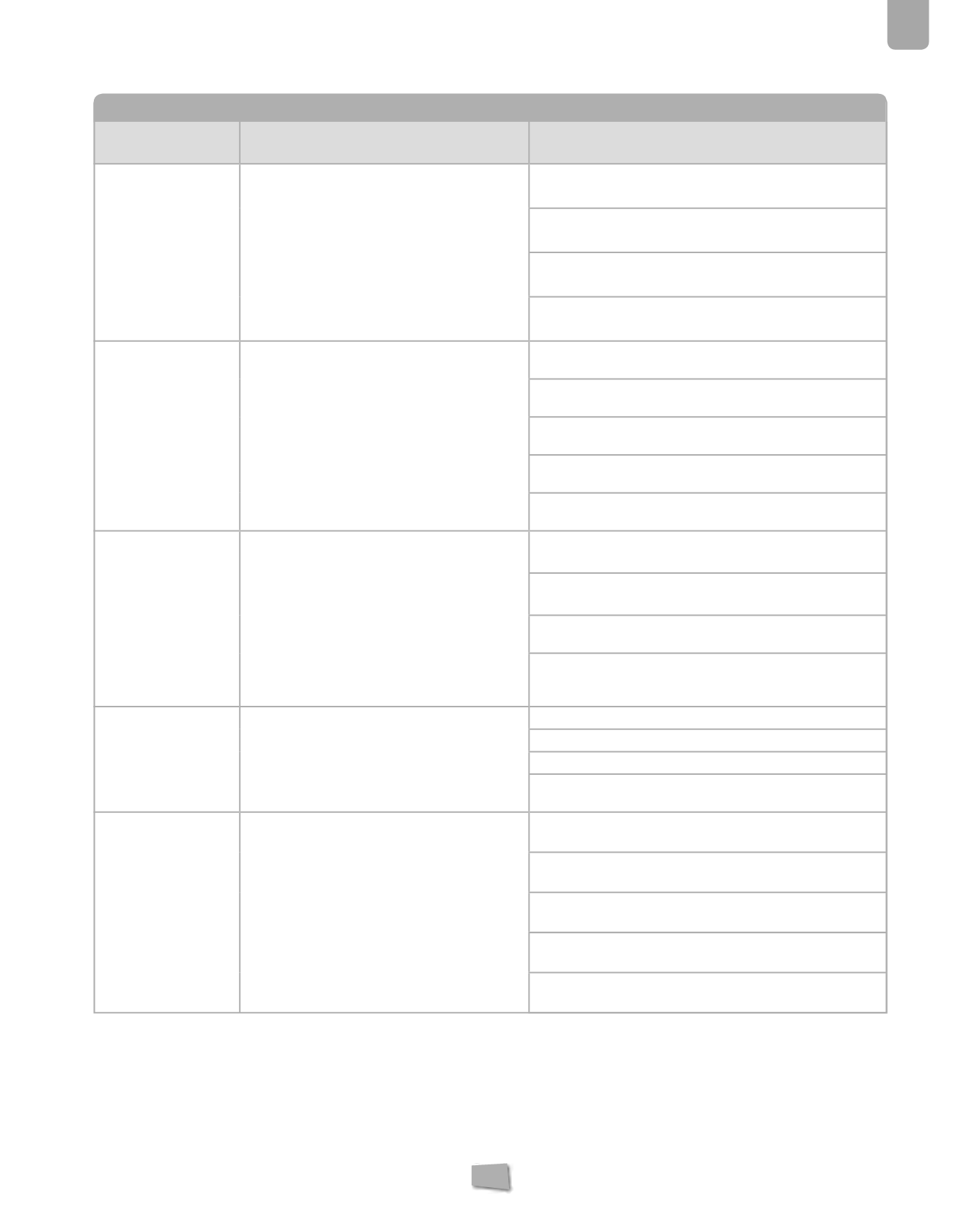
101
5
Structures
U N I T L E S S O N P L A N
Contents
Assessment criteria
Learning outcomes
Forces and structures
❚
Natural and human-
made structures
Types of structures:
solid, lintel, vaulted,
built using a framework,
triangular, suspended,
pneumatic, laminated and
geodesic.
1. solid, lintel, vaulted, built using a framework, triangular,
suspended, pneumatic, laminated and geodesic. .
1.1. Distinguishes between natural and human-made structures (CMCT).
1.2. Recognises the resistant structures inside buildings, everyday objects
and bodies. (CSC, CMCT)
1.3. Describes the typical characteristics of the different types of
structures, their advantages and disadvantages. (CL, CMCT)
1.4. Recognises basic types of structures in common objects and
structures. (CMCT)
Definition of load:
Fixed and variable loads.
❚
Concept of internal
tension and stress.
Main types of stress:
traction, compression,
bending, torsion and
cutting.
3. To analyse how loads act on a structure, identifying and
describing the stresses which it undergoes.
3.1. Knows the interrelationship between forces, loads, stresses and
deformation in structures. (CMCT)
3.2. Understands the difference between the different types of stress.
(CMCT)
3.3. Links the different types of stress with the forces that cause them
and the deformations which they produce. (CMCT)
3.4. Recognises and gives examples of everyday objects which undergo
different types of stress. (CMCT, SIE)
3.5. Describes the transmission of loads through the elements of a
structure. (CL, CMCT)
Main elements
of human-made
structures:
Concrete
slab, beam, pillar, column,
foundations, vault, arch,
lintel, cable suspenders,
bracing, flying buttress,
buttress, etc.
2. To identify the basic structural elements of human-
made structures, describing their functions.
2.1. Identifies the main structural elements present in buildings and
structures. (CEC, CMCT)
2.2. Knows the function of each element inside a concrete structure.
(CMCT)
2.3. Envisages the characteristic stress which each element of a structure
is subjected to under the action of certain loads. (CMCT)
2.4. Identifies the most suitable materials for the construction of different
structural elements according to the stresses which they will be subjected
to. (CMCT)
Conditions of human-
made structures:
rigidity,
resistance and stability.
❚
Triangulation.
4. Can identify the conditions which a structure must meet
in order to function.
4.1. Knows the conditions which a structure has to meet. (CMCT)
4.2. Defines the concepts of stability, resistance and rigidity. (CL, CMCT)
4.3. Recognises when a structure is stable, resistant and rigid. (CMCT)
4.4. Knows how to use the means to ensure that a structure is stable,
rigid and resistant. (SIE,CMCT)
Final Task:
Design and
construction of a
structure
❚
Design, analysis, virtual
trial, construction and
testing of a bridge.
5. Can design and build simple structures in order to
experiment with them.
5.1. Experiments with everyday materials to solve simple structural
problems. (LL, SIEE)
5.2. Designs suitable structures to solve problems with the materials
shown. (LL, SIEE)
5.3. Builds structures that solve simple problems.(CMCT, LL)
5.4. Analyses and tests the behaviour of the structures which have been
built. (DC, CMCT)
5.5. Describes the characteristics of the structure and how it functions.
(CMCT, LC)


